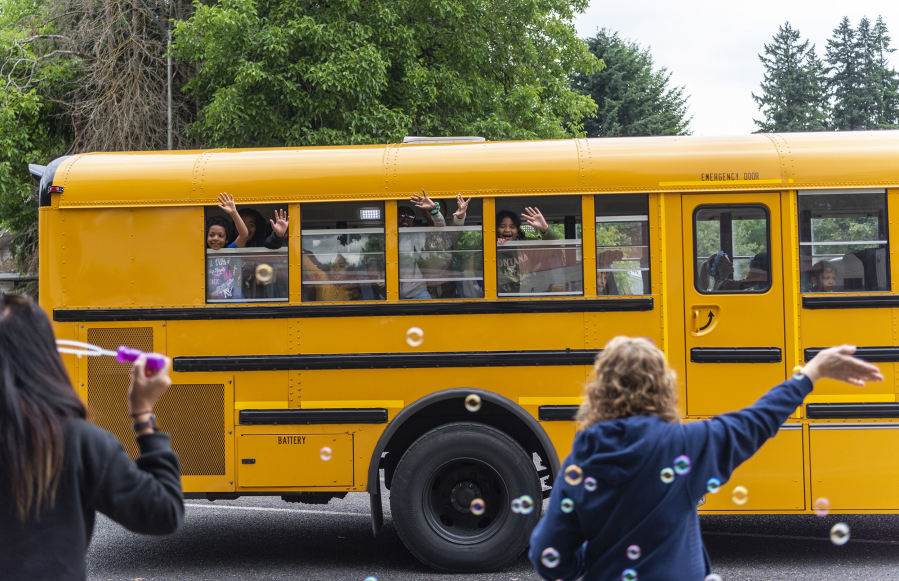Seattle Public Schools is facing declining enrollment. Community meetings began last month about the district’s “vision for well-resourced schools,” though the district says these meetings won’t include discussing consolidating the district’s 106 school buildings. But closures are clearly on the table for the next school year.
Declining enrollment is not a Seattle-only issue. It’s national. In nearly every state, public schools are projected to have fewer students by the end of the decade — even in states with fast-growing populations.
In Washington, enrollment in public schools from prekindergarten through grade 12 is projected to be 1,033,500 by fall 2030 — that’s down by 59,300, or 5.4 percent, from fall 2023. The data comes from the National Center for Education Statistics.
Washington’s projected drop in enrollment is just slightly greater than the projected national average. In fall 2023, total public-school enrollment in the U.S. is projected to be 49.7 million, and that number is expected to fall by nearly 2.5 million, or 5 percent, by 2030.
There are only four states where enrollment is expected to increase: Utah, North Dakota, Arizona and Tennessee. There are also four states where the projected decline exceeds 10 percent: West Virginia, New Mexico, Mississippi and New Hampshire.
The data divides enrollment into two groups: prekindergarten through grade 8 and grades 9 to 12. In Washington, both groups are projected to decline. The number of students in prekindergarten through grade 8 is expected to drop from 739,800 in fall 2023 to 707,700 in fall 2030, a decline of 4.3 percent. For grades 9 to 12, the number of students is expected to drop from 353,000 to 325,800, a 7.7 percent decline.
Public-school enrollment took a big hit nationwide during the pandemic, dropping by at least 1.2 million, with the biggest declines among kindergarten students. Most public schools offered only remote instruction, which may have had a negative impact on enrollment. One study found that schools offering remote-only instead of in-person instruction had a 42 percent greater drop in enrollment.
Schools finally reopened, but there hasn’t been a rebound in enrollment.
Part of this trend seems to be a growing dissatisfaction with public schools among some parents. Interest in alternative arrangements to public schools, such as home schooling and private schools, increased markedly during the pandemic.
In Washington, more than 28,000 students were registered for home schooling in 2022-23, an increase of about 35 percent from 2019-20, according to data from the Washington Office of Superintendent of Public Instruction. In the same period, private-school enrollment in Washington jumped by almost 26 percent from about 65,000 to nearly 82,000.
Demographic changes are perhaps a more important factor in declining public-school enrollment. These factors include declining fertility rates across much of the country as well as patterns in migration.
Americans are getting married later, if at all, and an increasing share of adults are childless and do not expect to have children. As a result, fertility rates in the U.S. have been on the decline for many years, and took a sharp downward turn during the pandemic. Fewer births, naturally, means fewer school-age children.
Between 2005 and 2021, fertility rates dropped in all but two states, according to data from the Centers for Disease Control and Prevention. In Washington, the fertility rate dropped from 63 to 52.4. The fertility rate is defined by the CDC as the total number of live births per 1,000 women aged 15-44.
The state with the highest fertility rate is Utah, which also had the greatest increase in projected public-school enrollment from 2023 to 2030, at 3.4 percent. North Dakota, which was one of the two states (along with Louisiana) where the fertility rate increased, should also see a modest increase in public-school enrollment.
Utah and North Dakota are also among the states growing fastest because of in-migration, which is another factor affecting enrollment levels. States that are losing population, of course, are more likely to see enrollment declines, while states that are attracting new residents have less downward pressure on enrollment.
But this also depends on factors like the age and marital status of the migrants. For example, while Florida is among the fastest-growing states, it’s also a haven for retirees, and the median age of its population is one of the highest in the country. Florida’s public-school enrollment is projected to decline by 3.4 percent by 2030 despite its strong population growth. Texas, another destination state for many movers, is projected to see public-school enrollment drop by 3.1 percent.
But two other fast-growing states, Tennessee and Arizona, are both projected to have modest increases in public-school enrollment by 2030.



